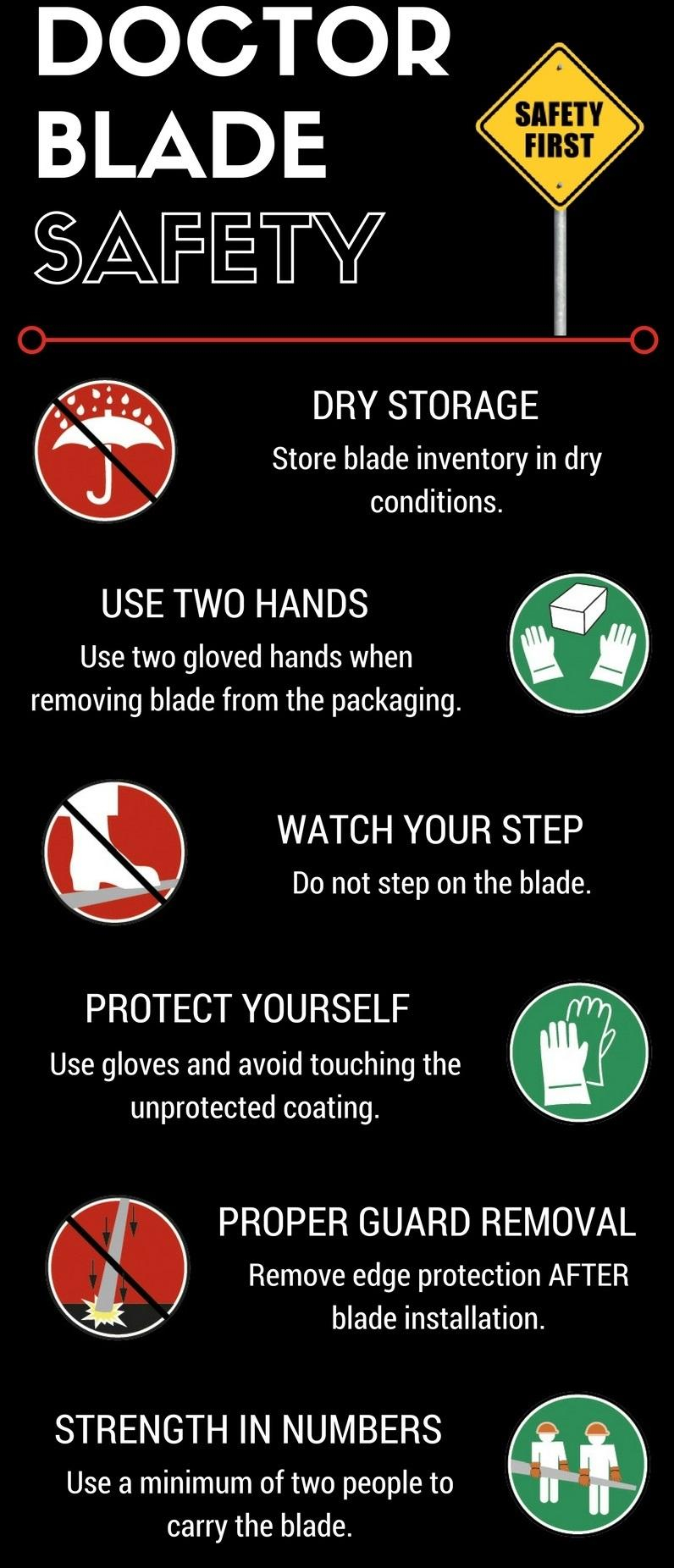
Doctor and Roll Cleaning Blade Safety
 Doctor and roll cleaning blades are made from plastics, metals, and composite materials. They typically range in thickness from 0.035-0.250” with a beveled edge and care must be taken when handling any type of blade. Some metal blades with a bevel can be as sharp as a razor blade. Proper handling procedures help protect against accidents and ensure a higher safety standard.
Doctor and roll cleaning blades are made from plastics, metals, and composite materials. They typically range in thickness from 0.035-0.250” with a beveled edge and care must be taken when handling any type of blade. Some metal blades with a bevel can be as sharp as a razor blade. Proper handling procedures help protect against accidents and ensure a higher safety standard.
Doctor blade manufacturers help to minimize handling issues when the blades are packaged for shipment. Paper protective envelopes may be used as well as plastic edge protection.
Doctor blades are often coiled in a box for shipment. The coiling process puts stress on the blade and care must be taken when opening the box. Always wear protective gloves when handling a blade beginning with removal from the box. Remove each blade from a box separately to optimize safety. Place the end of the blade on a bench or floor and carefully uncoil until it is lying flat. Use at least two people to move the blade to a storage rack or insert it into a doctor blade holder. When a blade is removed from a storage rack for installation into the machine, everyone touching the blade should wear safety gloves. Care must be given to avoid running hands over the bevel edge.
A blade being removed from a machine after use will be sharp, sometimes with jagged edges. A safer option for blade removal is a blade removal aid such as the BladeShark™ doctor blade extractor, which bites down on the used doctor blade and allows the operator to keep their hands free from the sharp, worn blade. The BladeShark™ doctor blade extractor will help with the removal of blades from holders, even blades that appear to be stuck. After a blade is removed, it must be disposed of properly.
Related Articles
Tagged with
Author
Share
Let’s Connect
Connect with Kadant Solutions Division on LinkedIn to learn more about our employees, products, and services.
